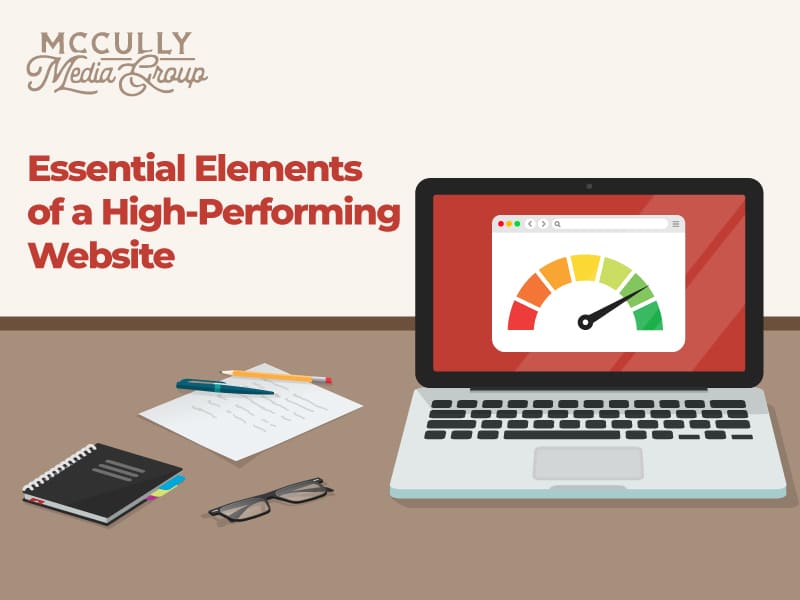Are you looking to create a high-performing website for your business? Having an effective web presence is key in this digital age, and investing the time to create a great user experience can bring immense benefits. From designing a user-friendly website to optimizing content for SEO, there are many factors that are essential to keeping your website up to industry standards.
What Is Web Development?
Web development refers to the process of creating and maintaining websites. This process includes aspects such as design, content creation, coding, and server administration.
In a business context, web development can play a crucial role in promoting your brand, increasing customer engagement, and improving customer experience.
A high-performing website can serve as an online storefront for a business, providing information about products or services, allowing customers to place orders, and facilitating communication between the business and its customers. Effective web development can also help businesses reach a wider audience because it makes information about the brand and its products and services easily accessible to all internet users.
Designing a User-Friendly Website
Following are the important elements of effective website design:
Easy Navigation and Accessibility
The key to creating a high-performing website is to ensure users can find what they need quickly. This means providing intuitive menus with clearly labeled categories that make sense in the context of your site’s purpose.
Mobile Responsiveness
With more people using their phones or tablets than ever before, it’s essential to design websites with mobile responsiveness in mind. A responsive design will ensure that no matter which device someone uses to view your site, the layout will adjust accordingly, without sacrificing usability or functionality.
Clear Calls To Action
Every page of your website should have a clear call-to-action (CTA) prompting visitors to take an action, such as signing up for an email list or purchasing a product/service you offer. Make sure these CTAs stand out or “pop” by using contrasting colors and font sizes, so they don’t get lost among other content on the page.

Image credit: Austin Diesel | Unsplash
Optimizing Web Content for SEO
It’s essential to design web content for search engine optimization (SEO), which increases your website’s visibility and ranking on search engine result pages (SERPs).
Keyword Research and Selection
Keywords are the foundation of SEO. They help search engines understand what your content is about, so it’s important to choose keywords that accurately reflect the topic of your web page or blog post. When researching keywords, look for terms with high search volume but low competition. Tools like Google AdWords Keyword Planner can be used to identify relevant keyword phrases and determine their popularity.
Meta Tags, Titles, and Descriptions
Meta tags provide additional information about a webpage, such as its title, description, and author name, which helps search engine crawlers index pages more efficiently. It’s important to include relevant keywords in meta tags, as they play an important role in how a website ranks on SERPs. Titles should be descriptive yet concise, while descriptions should be informative yet engaging enough to encourage clicks from potential visitors.
Internal Linking Structure
Internal links allow users to navigate between different pages on your website and also help search engine crawlers discover new content. When creating internal links, make sure they’re contextually relevant by linking related topics together within posts or articles. This will improve user experience and also boost SEO rankings over time.
Quality Content
Quality content is essential for any successful SEO campaign, as it provides value to readers while helping websites rank higher on SERPs. Focus on creating original content that offers useful information without being overly promotional. Use visuals such as images or videos whenever possible, as these tend to attract more attention than plain text alone. Additionally, ensure all copy is free from spelling errors and grammatical mistakes before publishing online, as this helps to create a professional impression with readers.
Utilizing Social Media to Promote Your Website
Utilizing social media to promote your website can be an effective way to increase visibility, drive traffic, and build a strong online presence. Here are some steps to consider:
- Identify the right platforms: Choose social media platforms where your target audience is most active.
- Develop a content strategy: Create engaging, relevant content that resonates with your target audience, including posts that promote your website and its products or services.
- Engage with your audience: Respond to comments and messages, and participate in relevant discussions to build a relationship with your followers.
- Use visually appealing content: Posts with images, videos, and infographics are more likely to be shared and attract engagement.
- Pay for advertising: Paid social media advertising can be a powerful tool to reach a wider audience, drive traffic, and increase conversions.
Leveraging Analytics to Track Website Performance
Leveraging analytics to track website performance is an essential aspect of effective web development and can provide valuable insights into how visitors engage with your site. Here are some steps to consider:
- Install an analytics tool: Choose an analytics tool that suits your website’s needs, such as Google Analytics, and install it on your site.
- Set up tracking: Configure the analytics tool to track the key metrics you want to monitor, such as page views, bounce rate, and time on site.
- Track audience behavior: Analyze how your visitors engage with your site, including what pages they visit, how long they stay (dwell time), and what actions they take.
- Monitor traffic sources: Identify where your traffic is coming from, including organic search, referral sources, and paid advertising.
- Measure conversion rates: Track how many visitors take the desired action on your site, such as making a purchase or filling out a contact form.
- Use data to optimize: Use the insights gained from your analytics to make informed decisions about how to optimize your site, including improving the user experience, adjusting your content strategy, and making technical improvements.
What is Good Website Performance?
Good website performance is the combination of a well-designed, user-friendly interface and effective content that leads to increased visitor engagement. This includes fast loading times, easy navigation, relevant content, attractive visuals, and clear calls to action. It also involves optimizing for search engine visibility, so potential customers can find your site more easily. All these elements work together to create an enjoyable experience for visitors, which ultimately leads to higher conversion rates.
What Makes a Website High-Performing?
A high-performing website is one that effectively meets the needs of its users. It should be easy to navigate, with a clear structure and intuitive design. Content should be relevant, up-to-date, and optimized for search engines. Additionally, it should load quickly and have an attractive visual aesthetic that draws visitors in. Finally, it must also provide value to its audience through useful information or services, so they keep coming back.
How Do I Create a High-Performing Website?
Creating a high-performing website requires careful planning and execution. Start by defining your target audience, then create content that speaks to their needs and interests. Utilize SEO best practices to ensure your site is discoverable in SERPs. Develop an effective user experience with intuitive navigation, fast loading times, and engaging visuals. Finally, test the performance of your website regularly to identify areas for improvement. With these steps, you can create a website that drives conversions and increases brand awareness.
Create a High-Performing Website
McCully Media Group is here to help you create a high-performing website that will attract customers and increase your ROI. Our experienced team of professionals can develop an effective digital marketing strategy tailored specifically for your business needs. We’ll work with you every step of the way, from developing content to analyzing data and results. Take advantage of our full-stack marketing experience to get more leads, convert them into sales, and make the most of your online presence. Book your free consultation today.
Learn More:
Step-By-Step Guide To StoryBrand Your Website
Top Types of Content That Drive Website Traffic
Landing Page Tips: Essential Strategies To Increase Conversion




